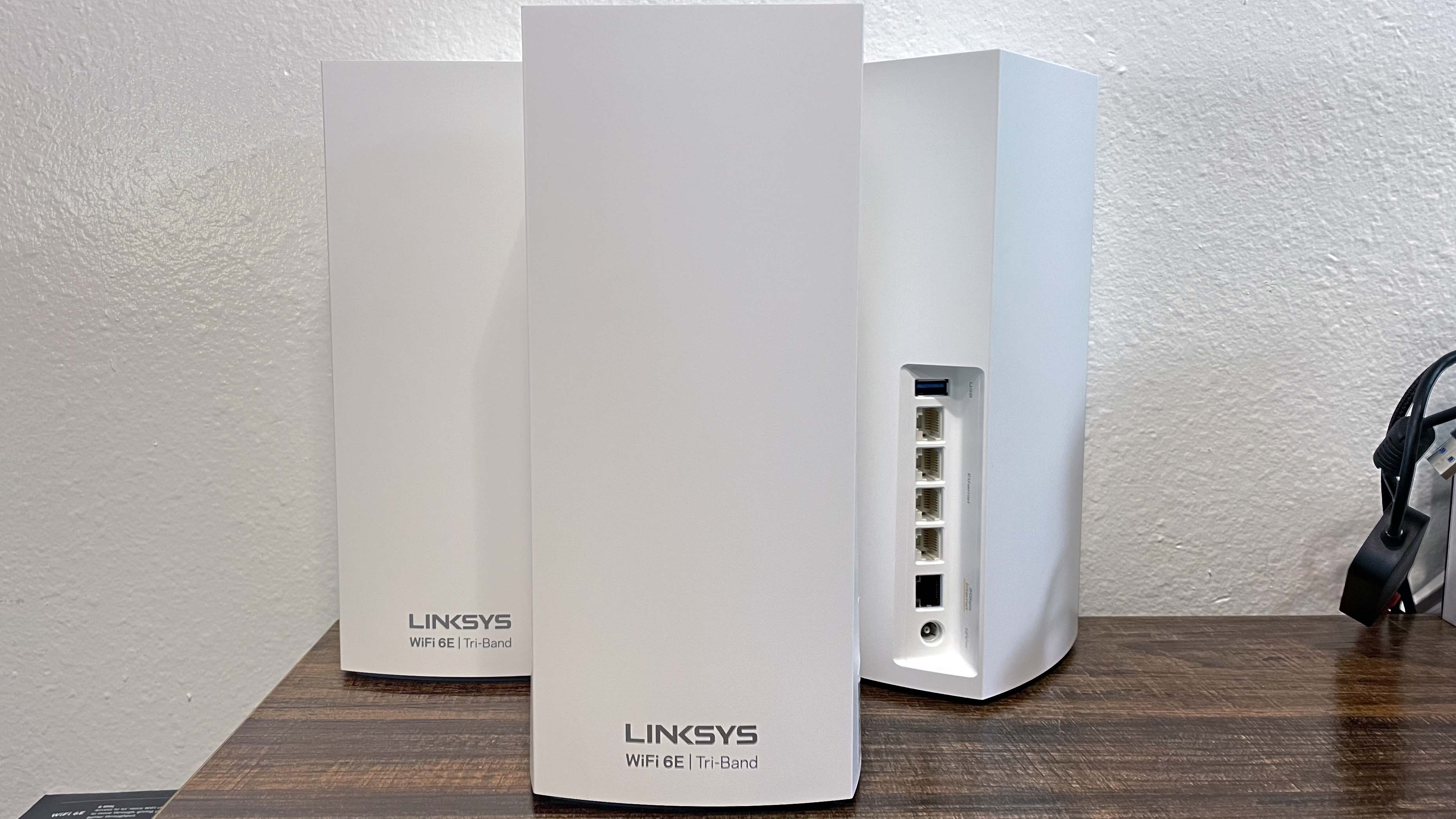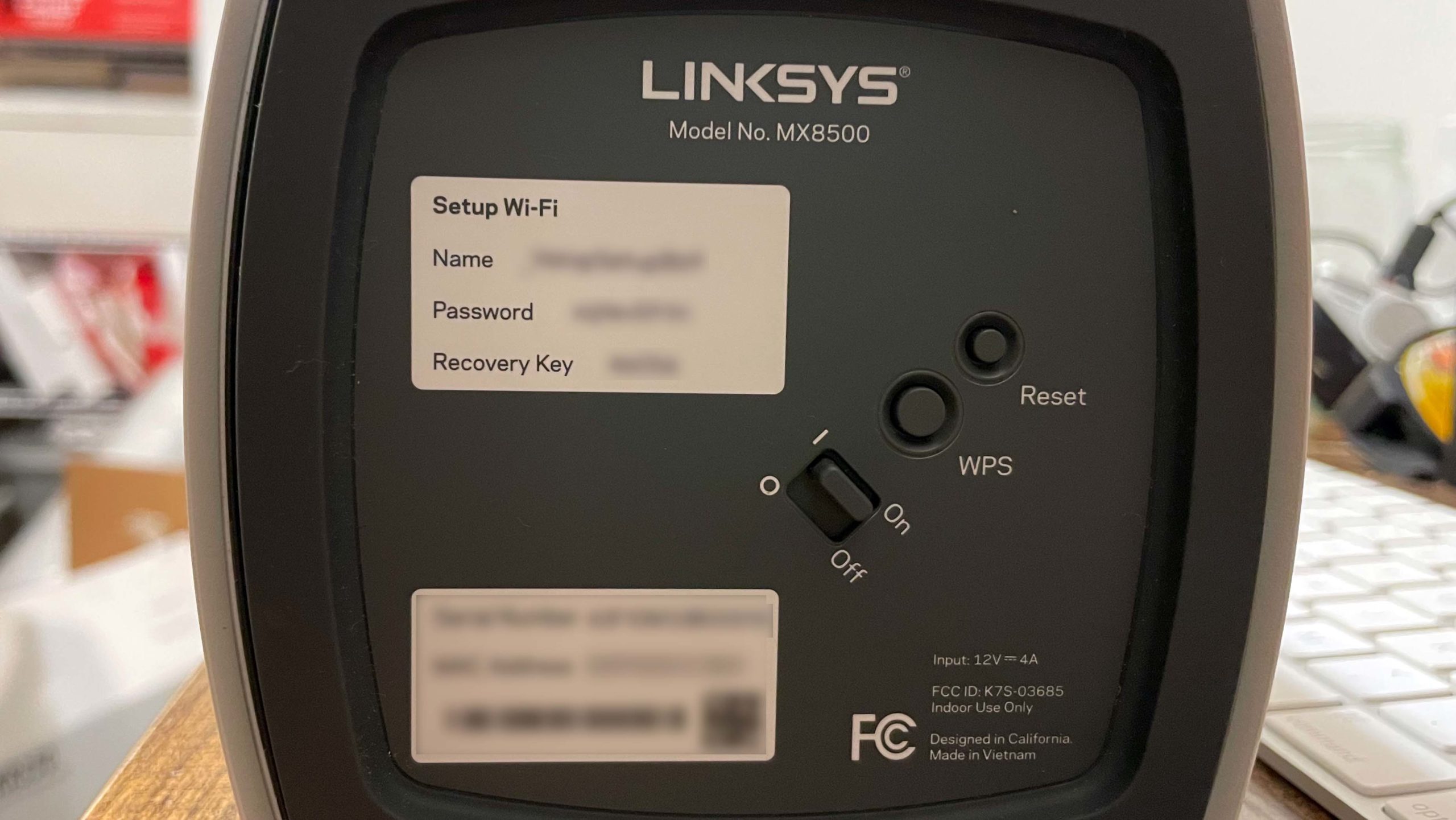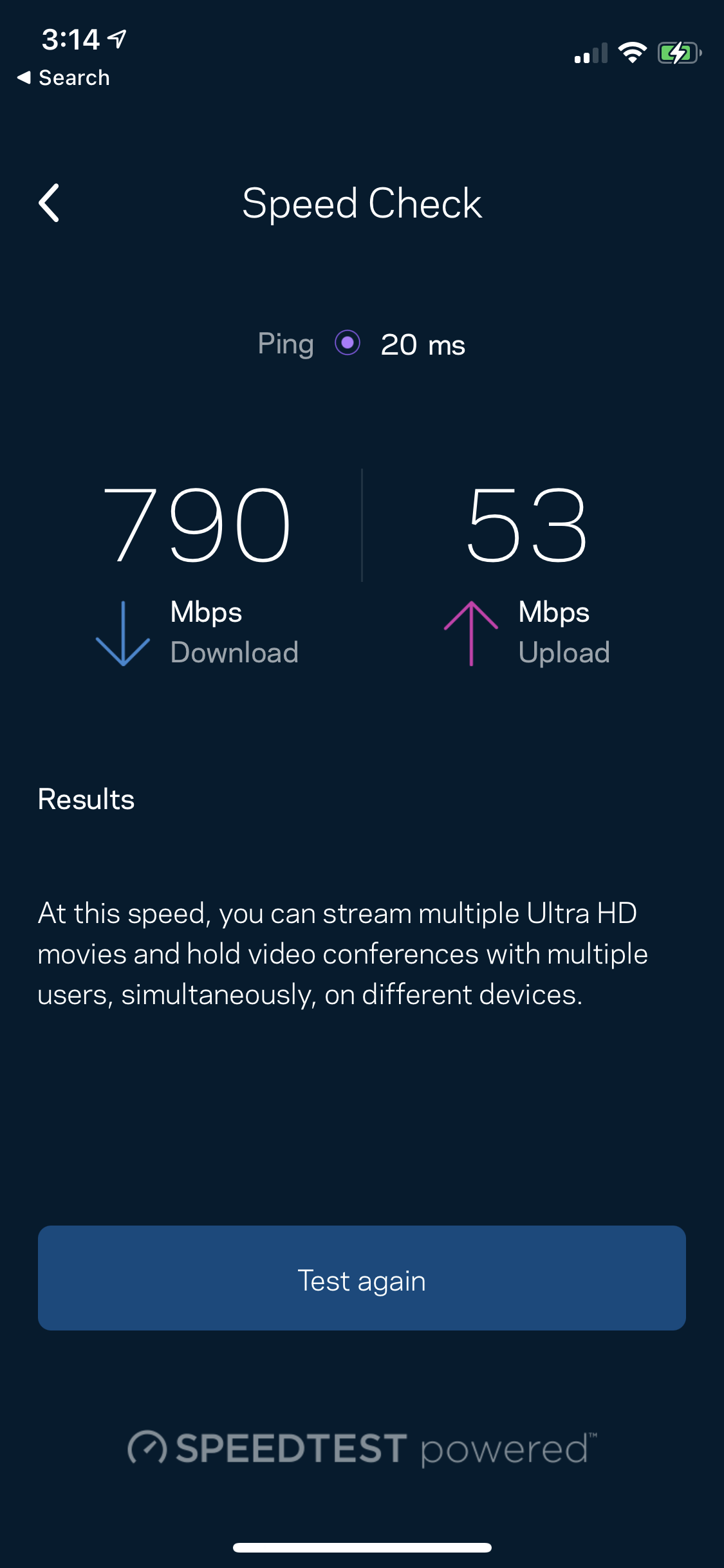Although it was beaten to market by Asus’ newest ROG Rapture router, the Linksys Atlas Max 6E was actually the first WiFi 6E-certified router, having earned the distinction on Jan. 14. That means it’s also the first mesh router to garner the certification. It promises exceptional throughput, and you can expect to see up to near-gigabit speeds all over your home with a few extra nodes placed in just the right spots.
That is, assuming you have some WiFi 6E devices lying around to take advantage of those speeds. Hey, don’t look at me like that! You knew what this was.

Linksys Atlas Max 6E
What is it?
The first WiFi 6E-certified mesh router
Price
$US1 ($1),199 ($1,538)
Like
Crazy fast wifi everywhere in my home; easy setup; software is straightforward and easy to use; not hideous
Don't like
Too expensive; the power brick/cable combo is all wrong; status LED light is so bright; features are lacking and network security nonexistent
Not the Most Hideous Router
The Atlas Max looks nearly identical to its predecessors, including the Linksys Velop MX10: It’s an Xbox Series X-shaped (or is the Xbox Velop-shaped?), nigh-featureless white brick that stands on its end. The top has gridded holes for cooling and a single, brilliant status LED that you can’t turn off, which drives me nuts — it’s so damn bright!
On the back, you’ll find a single 5 Gbps ethernet WAN port and four gigabit LAN ports, along with a USB 3.0 port for direct-attached storage, and a barrel-shaped power port. There is a power switch on the recessed bottom, as well as a reset button and a WPS button. All of this is true of every node in the three-pack, which is nice when compared to the equally-pricey, excellent AmpliFi Alien 2-pack, where the MeshPoint second router bears only one ethernet port and simple status lights.

I want to take a moment to talk about the greedy, unwieldy external power supply each Atlas Max comes with — it’s hard to really convey how large they are. I live in Texas, so I want to say they’re about the size of a generous breakfast taco. If you like games and are old enough, think of the first time you held the affectionately-nicknamed Duke, the original Xbox’s bloated first run at a controller. The Atlas power supply is simply needlessly large, forcing me to rearrange the plugs on my UPS to accommodate its girth. Most companies deal with bricks this large by either hiding them away inside the unit or putting them in the middle of the power cable, and I do wish Linksys would consider this.
Inside, the Atlas Max is powered by a 2.2 GHz quad-core processor with 1GB RAM and 512MB of flash. It’s a tri-band router, with the second 5 GHz band normally seen with tri-bands replaced by 6 GHz. Because of the 802.11ax protocol used by the router, it also features OFDMA and updated MU-MIMO technologies. Together, these features enable it to communicate with multiple devices at once, the former by subdividing channels on a single stream for low-bandwidth smart home devices, and the latter by broadcasting multiple simultaneous data streams. Though WiFi 5 also uses MU-MIMO, WiFi 6 expands this capability to the 2.4 GHz band for the first time, which likely at least partially accounts for the speed boosts you see on that band with this and other WiFi 6 routers.
Easy Setup, but Lacks Features
Setup was characteristically easy, though only intended to be done through the phone app, as far as I could tell. It’s not that you can’t do it via a web browser; it’s just that there is no setup wizard when you do, and the Atlas’ status light won’t change to blue from purple until you complete setup in the app, which does not in any way acknowledge that you’ve done any sort of setup yet. I personally don’t think this is the right choice, even if we do live in a world where the kinds of people who can afford this router definitely have a smartphone. But this does not kill the Atlas Max.
After setup, management of the router is perhaps easier through the phone app, but neither the app nor the browser-based UI allow for any particularly advanced administration — the Atlas Max is aimed directly at average consumers, after all.

That said, in this range, other routers add a lot of bells and whistles you just don’t see with the Atlas. Missing is any sort of network activity metre, network-level ad-blocking or malware protection, or any advanced feature set for gamers or work-from-home professionals who might need the kind of adaptive prioritisation features that require minimal input from them. It has Quality-of-Service (QoS) of course, but it’s a pretty basic implementation of it relative to some of Linksys’ competitors. It’s not just that the Velop features are simple — it’s that they feel incomplete by comparison to the Atlas’ peers. Still, there isn’t really anything particularly confusing in either the app or the browser UI, and although I can’t stand one particular behaviour of the app (tapping “back” in many of the menus takes you back to the home screen, rather than the previous menu), I found it easy enough to get around.
Blazing Fast Performance
Of course, in reality, what you want most out of your router is excellent performance, and, at least here, the Atlas does deliver, blowing my normal WiFi 5 Eero system completely out of the water. I tested it first as a single router, with no activated nodes, to get a feel for the range of the Atlas Max 6E on its own. I found that the lone unit, tested with a Samsung Galaxy S21 Ultra for the 6 GHz and 5 GHz bands using the 802.11ax protocol, was more than enough for my house. Downloads were very fast on both bands everywhere I tested it within the house. My smart home devices didn’t seem to have any qualms, apart from restarting the usual suspects, and I was able to stream audio and video on several devices at once without any hiccups. On its own, one Atlas Max doesn’t quite reach the couple of devices I have in my work shed, which is about 24.38 m behind my house, but that has only ever worked when I’m using a mesh system with a node at the very back of the house, or when I’m testing some of the more powerful, grotesque, antenna-laden options out there.

Satisfied with the indoor performance of the Atlas, I linked up the two satellite nodes. Here, I found a little bit of unsteadiness, with some of my smart home devices stubbornly refusing to cooperate with the change, but I was able to eventually get everything back online and behaving. At this point, I decided to bridge the Atlas Maxes for testing, in the interest of my family’s sanity. Constantly separating bands and recombining them can greatly test one’s patience when all one wants to do is add tortilla chips to a shopping list via a smart speaker, after all. I got excellent results, with a couple of quirks — numbers that seemed wrong based on where I was testing.
I was able to retest later with the Atlas again set up as a normal router, and got the numbers I expected — near 600 Mbps using a WiFi 6 connection — but it exposed one annoying little omission: the ability to view which devices are connected to which nodes when the Atlas is in bridge mode. I might have assumed this just isn’t possible, if not for the fact that the Asus AiMesh routers I’ve tested in the past are perfectly capable of doing so in bridge mode. This is a small complaint, ultimately, and really only annoying if you’re testing a router for review and you don’t know which node you’re connected to without using network analysing tools.
With a mesh network set up, I ran tests again on the faster 6 GHz band. Again, I saw excellent throughput, if slightly reduced, likely owed to the fact that the Atlas Max uses the 6 GHz band as wireless backhaul between nodes. You can think of backhaul as the backbone through which all of the data courses between nodes. This gave me over 600 Mbps at my dining room table, which is just bonkers fast. Having an ethernet drop going to my bedroom, I went ahead and ran tests with a node in there, connected to the main router via ethernet, and the improvement there is astounding, with internet speed tests pulling down numbers that match what I would see hardwired to the modem itself. While I will never need that kind of speed in that room, I found I needed a projector at the beginning of the pandemic, and this would make streaming movies in my backyard a much better experience, since the router sits on a table against the back wall of my home.
Should You Buy It?
Being able to see download speeds in excess of 600 Mbps literally anywhere in my house and at least 15.24 m into my backyard is pretty amazing, and really makes you wonder why you would even bother with a single access point if mesh can get you this. Oh, of course. The price. See, I don’t think I have to tell you that, at an eye-watering $US1 ($1),200 ($1,539) MSRP for a triple-pack, the Atlas Max 6E is breathtakingly expensive. That’s twice what it costs to buy a three-unit Eero Pro set, and although it’s overkill for, say, my 1,200-square-foot home (that’s $US1 ($1) per square foot of WiFi according to my Very Good Maths), Linksys hasn’t offered any other option for piecemeal purchase of this router. I hope they do, because a single unit performed fairly well in my testing and $US400 ($513) is a much easier number to swallow. Relatively easier, anyway.
One last thing to note: The Atlas Max, like its WiFi 6 predecessors, is not among the shamefully short list of Apple HomeKit Secure routers. If you’re considering buying it, but having that feature is a dealbreaker to you, it wouldn’t be the worst idea to hold off until Linksys has announced anything about that.
All in all, the Atlas Max 6E is simply too expensive. It performs extremely well, but the lack of advanced configurability or clever QoS smarts hinders it, as well as the lack of security features found on previous Linksys routers (though Linksys told me it does intend to add Linksys Shield and Linksys Aware to these routers eventually, so keep your eyes peeled for that). The Atlas Max may put up some incredible numbers, but with almost no WiFi 6E devices on the market yet, and plenty of excellent, cheaper WiFi 6 routers to be found — including Linksys’ own MX10 Velop 3-pack — it’s extremely hard to recommend it at this price, especially with all the holes in its feature set. I have to assume, however, that many of these downsides will work themselves out in time, so for now I’d categorise this one as a wait-and-see.
